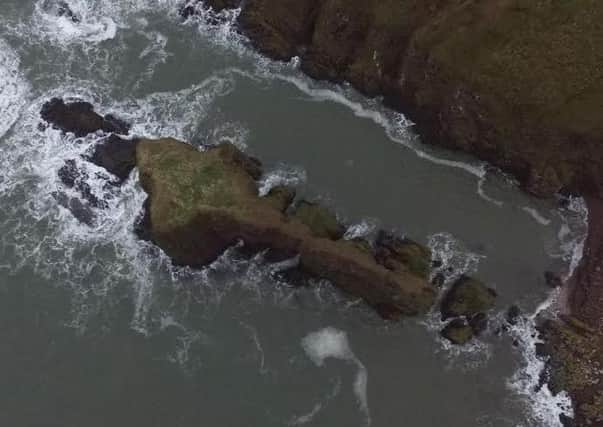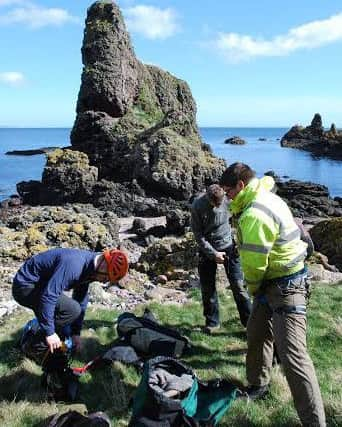Dunnicaer: Return to Scotland's '˜oldest' Pictish fort


Findings from the sea stack site at Dunnicaer just south of Stonehaven, Aberdeenshire, have been carbon dated from 3 to 4 Century AD - up to 200 years earlier than first thought.
Dr Gordon Noble, of Aberdeen University, said the fort was clearly one of the earliest seats of power in Scotland, which sits just north of Dunnottar Castle.
Advertisement
Hide AdAdvertisement
Hide AdHe and his team are now to return to the site in April for further excavation.


Dr Noble has taken the unusual step of launching a £5,000 Crowdfunding campaign in order to finance the next stage of the research.
Dr Noble said: “It has taken months of detailed lab work to date the site but that not much more is known about it.
“We want to find out what people were doing at this sort of fortified site, what kind of buildings were there, what kind of characters were there.”
Dr Noble added the site would have “almost certainly” been chosen to control sea lanes and create a fort that was both easily defended but also “a very visible and a dramatic symbol of power.”


He said: “I would say this was one of the very early power bases.
“You have the foundation of this new society, and it is really quite exciting.
Advertisement
Hide AdAdvertisement
Hide Ad“It is clear that this fort became really important in terms of the orchestration of power in that period.
“It would be closely associated with high status people, usually a king, who would be investing in this enclosure mostly to bolster power.”
Remains of the fortified site found last summer were divided into two terraces.
While erosion had removed significant parts of the fort, evidence of a timber and stone rampart plus internal buildings survived.
Dr Noble and his team will return to Dunnicaer, which is cut off a high tide and surrounded by sheer cliff faces, with the help of mountain climber Duncan Paterson.
He said the age of the fort also put into context a number of carved Pictish stones that were found at the site in the 19th Century.
The stones were always considered to be “rough and ready” compared to other examples but the date of the fort now explained their plainer design, Dr Noble said.
He said further work at Dunnicaer would cost around £5,000.
Advertisement
Hide AdAdvertisement
Hide AdA breakdown of costs shows that a £10 donation to the research fund can provide a batch of sample bags and finds bags for storing artefacts and environmental information.
A donation of £50 can provide basic conservation material for artefacts with £300 funding a carbon dating exercise.
More information on the Crowdfunder is available here.
